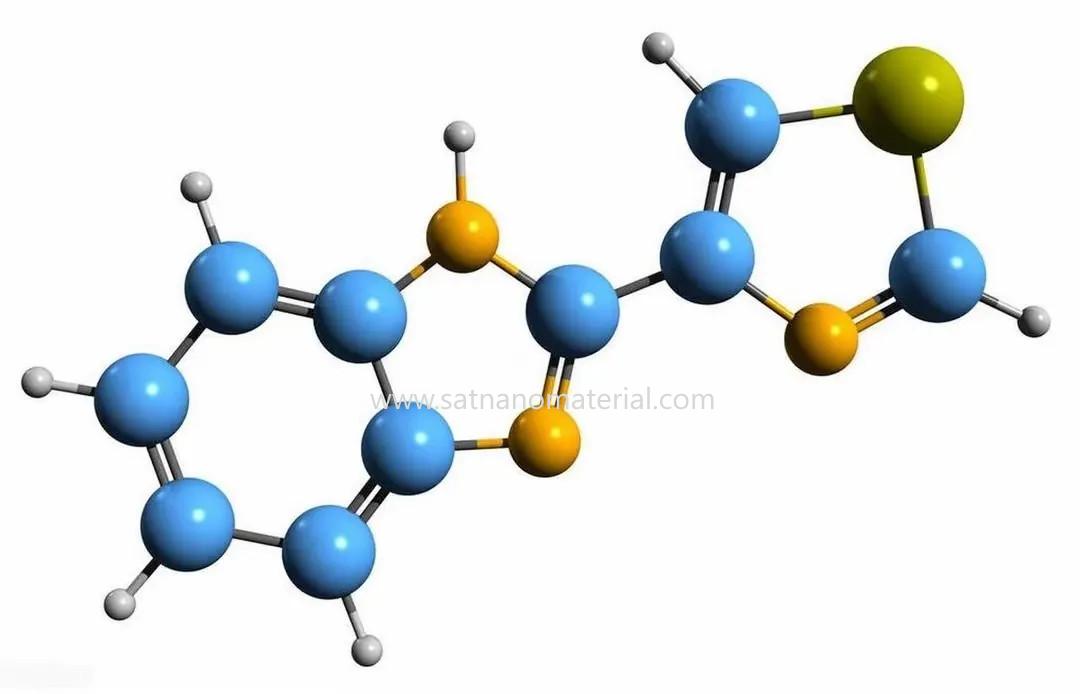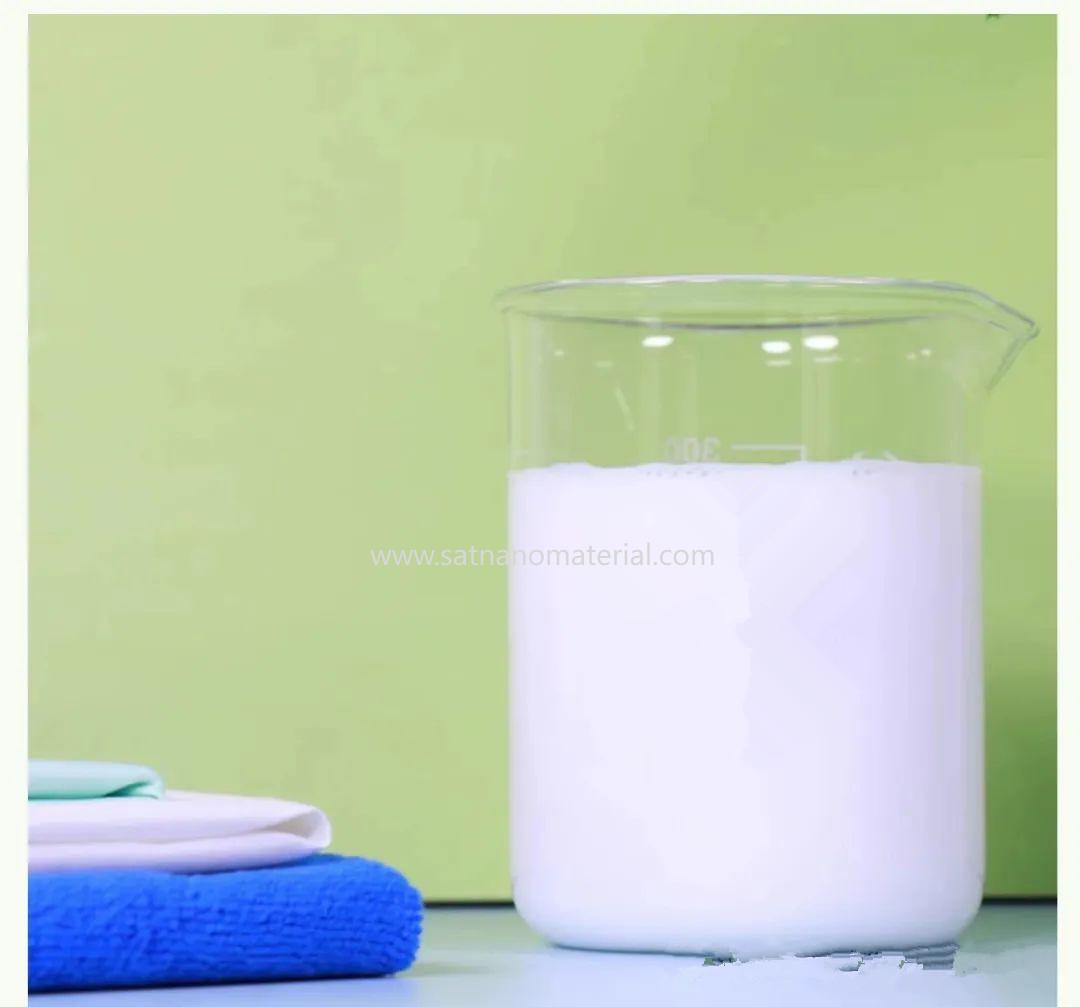1. 항균제 및 그 분류
항생제란 세균의 증식을 억제하고, 세균의 생활환경을 손상시키며, 효과적이고 지속적으로 그 효과를 발휘할 수 있는 약물을 말합니다. 항균제는 유기항균제와 무기항균제의 두 가지 범주로 나누어진다. 그 중 유기항균제로는 천연항균제와 합성항균제가 있으며, 무기항균제로는 주로 금속, 금속이온, 산화물 등이 있다. 일반적으로 언급되는 항균 조치에는 박테리아가 분비하는 독소의 억제, 사멸, 제거 및 예방이 포함됩니다. 무기항균제의 강력한 열안정성, 오래 지속되는 기능성, 안전성과 신뢰성에 최근 초미세 기술의 발달로 나노규모의 무기항균제를 대량생산하여 화학섬유에 혼합 또는 복합화할 수 있게 되었습니다. , 항균화학섬유의 산업화를 보장합니다.

2. 나노항균제
광촉매 특성은 나노반도체 소재의 중요한 특성 중 하나이다. 일반적인 반도체 화합물 재료로는 TiOz, ZnO, ZnS, CdS&PbS 등이 있습니다. 안전성과 비용 측면을 고려하면 TiO2와 ZnO가 실용성이 더 좋으며 TiO2가 가장 일반적으로 사용됩니다.
반도체의 흡수 파장 임계값은 대부분 자외선 영역에 있습니다. 광자 에너지가 반도체 흡수 임계값을 초과하면 반도체의 가전자대 전자가 밴드 간 전이, 즉 가전자대에서 전도대로 전이되어 광생성 전자(e)와 정공(h+)이 생성됩니다. . 이때, 나노입자 표면에 흡착된 용존 산소는 전자를 포획하여 과산화물 음이온(·05)을 형성하고, 정공은 촉매 표면에 흡착된 수산화물 이온과 물을 산화시켜 수산화물 라디칼(·OH)을 형성하게 된다. 과산화물 음이온과 수산화물 라디칼은 모두 강한 산화 특성을 갖고 있어 대부분의 유기물을 최종 생성물인 CO2와 H2O로 산화시킬 수 있습니다. 반응 과정에서 광촉매 자체라고도 알려진 이 반도체 물질은 어떠한 변화도 겪지 않습니다.
수많은 연구에 따르면 나노 TiO2에 일부 나노 ZnO를 추가하거나 나노 ZnO에 일부 나노 TiO2를 추가하면 단일 나노 소재에 비해 직물에 더 나은 항균 효과가 나타나는 것으로 나타났습니다. 이는 나노 TiO2와 ZnO 사이에 나노 시너지 효과가 있음을 나타냅니다. 이는 나노 TiO2와 ZnO의 표면 원자 때문입니다.
입자의 표면 효과는 다양한 환경과 밴드갭 폭에 따라 달라지며, 따라서 빛, 특히 자외선의 흡수에는 고유한 특성 밴드가 있습니다. 면직물을 나노 TiO2 및 ZnO 복합재로 처리하면 더 넓은 파장 범위에 걸쳐 자외선을 흡수하고, 더 자유롭게 움직이는 음전하 전자와 양전하 정공을 분해하고, 광생성 전자 정공 쌍을 형성할 수 있습니다. 주변의 물 및 산소와 반응하여 O-, H2O·, HOO·, H2O2를 더 많이 생성하여 박테리아를 효과적으로 죽이고 원단의 항균 효과를 향상시킵니다.
나노 TiO2는 살균제로서 다음과 같은 특징이 있습니다. 첫째, 은계 항균제의 효과는 약 24시간 내에 발생하는 등 즉각적인 효과가 우수하지만 나노 TiO2는 약 1시간만 소요됩니다. 둘째, TiO2는 용해효과가 점차 감소하는 다른 항균제와 달리 항균효과를 유지하는 반영구적 항균제이다. 셋째, 안전성이 좋고 피부 접촉에 부작용이 없습니다. 나노급 초미세 TiO2를 방사원료와 방사화학섬유에 분산시켜 만든 직물은 항균성이 좋고 가격이 저렴하다. 따라서 나노 규모의 TiO2는 기능성 섬유의 주요 항균 및 탈취제로 널리 사용됩니다.

3. 금속 이온 항균제
유기 항균제와 비교하여 금속 이온 항균제는 안전성이 우수하고 (독성이 낮고 발암성이 없음) 항균 활성이 높으며 내열성이 우수하고 항균 범위가 넓으며 지속성이 길고 약물 저항성이 없다는 장점이 있습니다. 전자, 자동차, 건축자재, 수처리, 의료, 식품, 사료, 포장, 섬유, 환경보호 등의 분야에서 널리 사용될 수 있습니다.
금속이온 항균제는 함유된 금속이온의 종류에 따라 은이온, 구리이온, 아연이온, 코발트이온, 니켈이온, 바나듐이온 항균제 등으로 나눌 수 있습니다.
일부 금속 입자(예: 은 나노 입자 및 구리 나노 입자)에는 특정 살균 특성이 있습니다. 화학섬유와 결합하여 방사되는 항균 기능성 섬유로 일반 항균 원단보다 항균력이 강하고 세탁시간도 길어집니다. 예를 들어, 초미세 항균 분말은 수지 제품에 항균 능력을 부여할 수 있으며, 각종 박테리아, 곰팡이, 곰팡이에 대한 억제 효과를 가질 수 있습니다. 이 분말을 합성섬유에 1% 첨가하면 방사성이 좋은 항균섬유를 생산할 수 있다.
SAT NANO는 나노 항균제 의 최고의 공급업체 중 하나입니다 . tio2 분산액 , zno 분산액 , sio2 분산액, 은 도핑된 tio2 분산액 및 구리 도핑된 tio2 분산액을 제공할 수 있습니다 . 문의 사항이 있는 경우 언제든지 admin@으로 문의해 주세요. satnano.com

